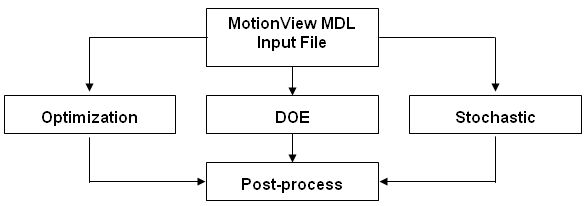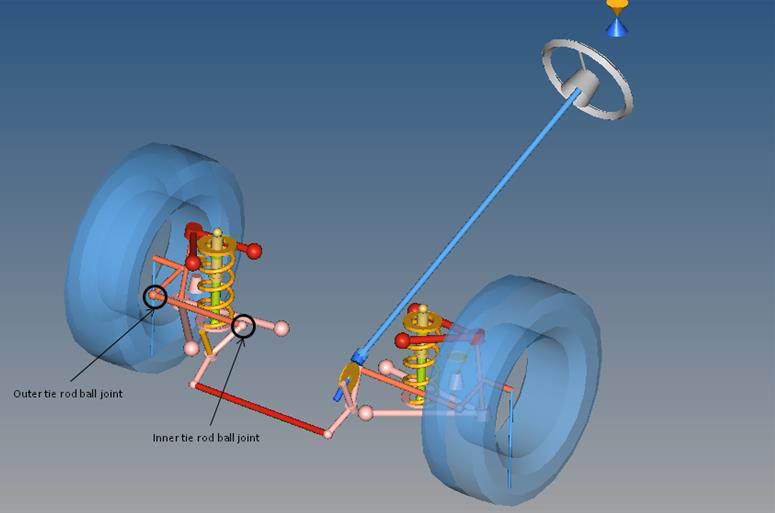MV-3000: DOE Using MotionView - HyperStudy
In this tutorial, you will use HyperStudy to set-up a DOE study of a MotionView model, perform a DOE study in MotionView - HyperStudy environment, and create an approximation to help perform optimization of the model.
- Theory
- HyperStudy allows you to perform Design of
Experiments (DOE), optimization, and stochastic studies in a CAE
environment. The objective of a DOE, or Design of Experiments, study is to
understand how changes to the parameters (design variables) of a model
influence its performance (response).
After a DOE study is complete, approximation can be created from the results of the DOE study. The approximation is in the form of a polynomial equation of an output as a function of all input variables. This is called the regression equation.
The regression equation can then be used to perform Optimization.Note: The goal of DOE is to develop an understanding of the behavior of the system, not to find an optimal, single solution.HyperStudy can be used to study different aspects of a design under various conditions, including non-linear behavior. HyperStudy also does the following:- Provides a variety of DOE study types, including user-defined
- Facilitates multi-disciplinary DOE, optimization, and stochastic studies
- Provides a variety of sampling techniques and distributions for stochastic studies
- Parameterizes any solver input model via a user-friendly interface
- Uses an extensive expression builder to perform mathematical operations
- Uses a robust optimization engine
- Includes built-in support for post-processing study results
- Includes multiple results formats such as MVW, TXT for study results
- Tools
- In MotionView, HyperStudy can be accessed from the main menu under .
You can then select MDL property data as design variables in a DOE or an optimization exercise. Solver scripts registered in the MotionView Preferences file are available through the HyperStudy interface to conduct sequential solver runs for DOE or optimization.
For any study, the HyperStudy process is as follows:Figure 1. 
- The HyperStudy Process
- MotionView MDL files can be directly loaded into HyperStudy. Any solver input file, such as MotionSolve, ADAMS, or Abaqus, can be parameterized and the template file submitted as input for HyperStudy. The parameterized file identifies the design variables to be changed during DOE, optimization, or stochastic studies. The solver runs are carried out accordingly and the results are then post-processed within HyperStudy.
